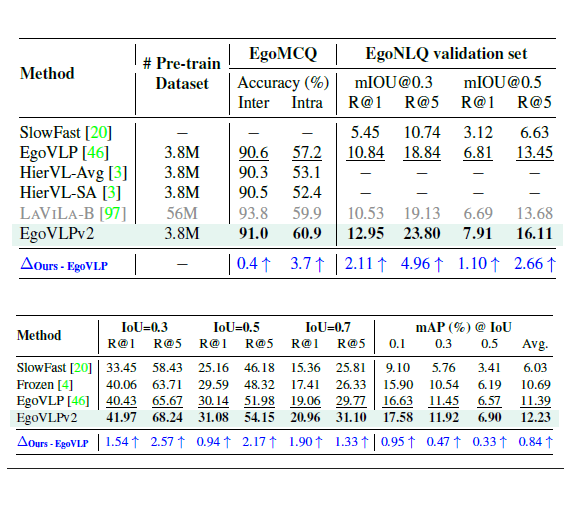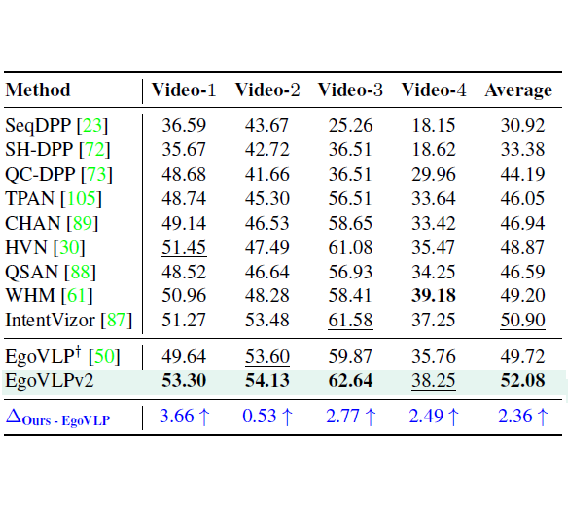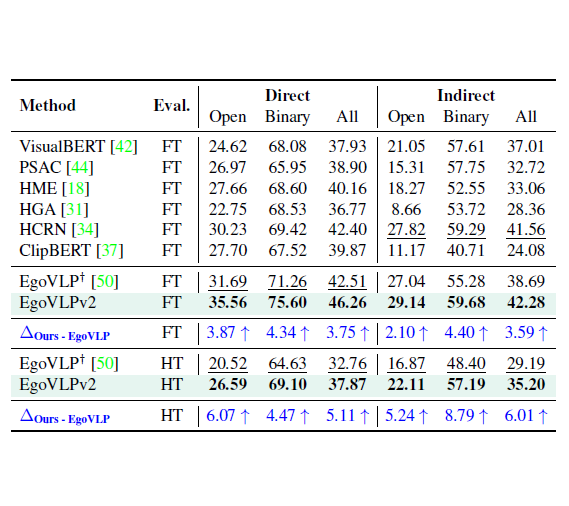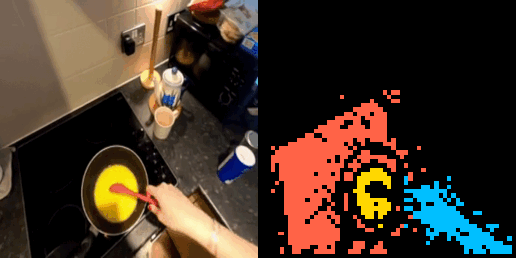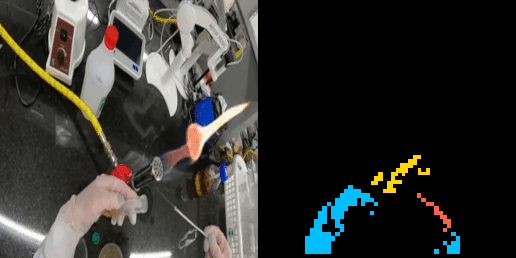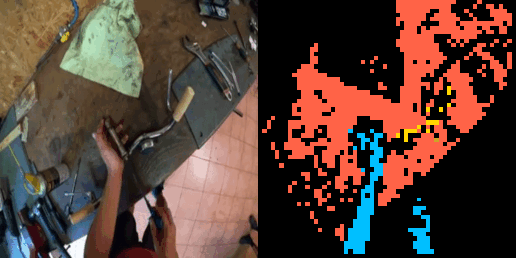EgoVLPv2 Framework
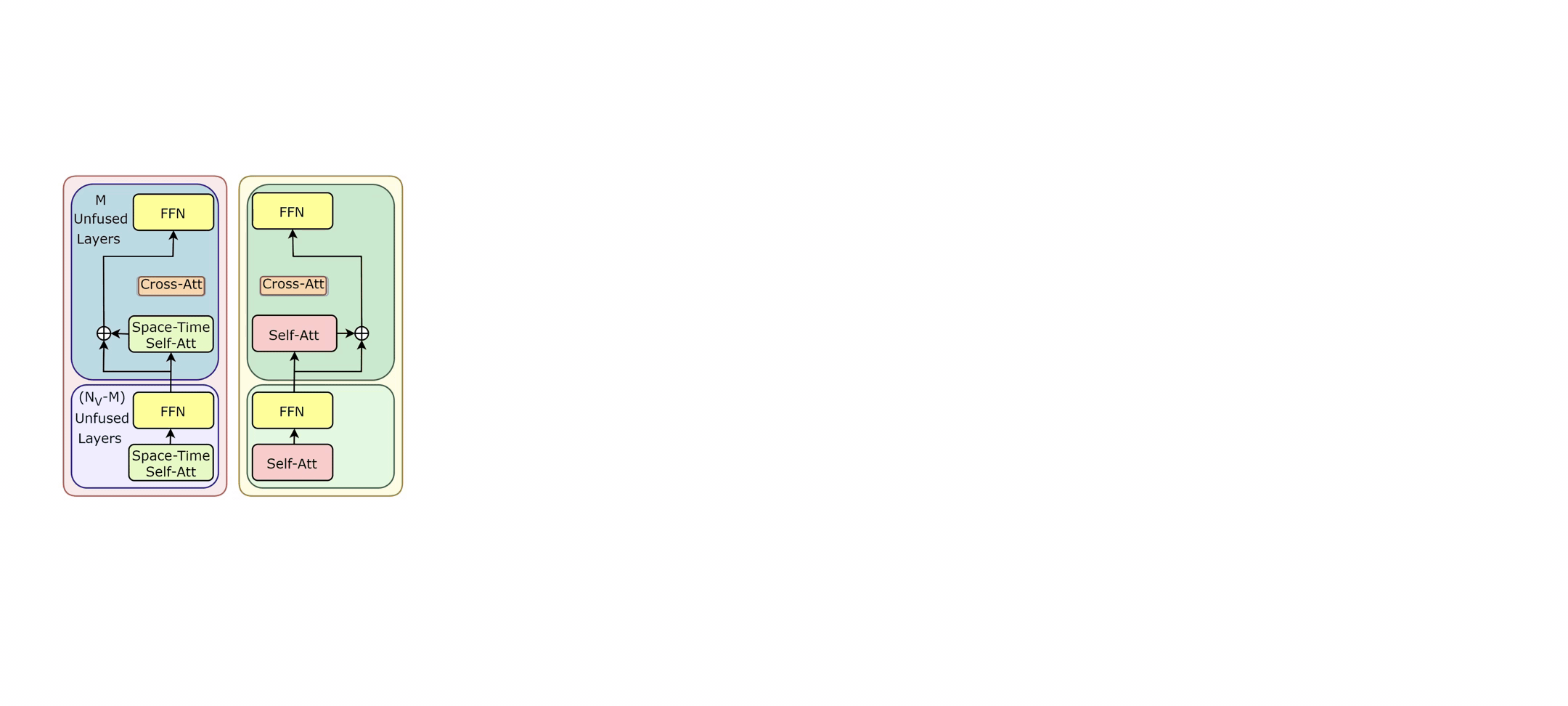
Computation of three objectives, LEgoNCE, LMLM, and LVTM. We insert cross-modal fusion into uni-modal backbones with a gating mechanism. During pre-training, every forward iteration contains three steps: (i) cross-attention modules are switched off, EgoVLPv2 acts as dual encoder, LEgoNCE is computed. (ii) cross-attention is switched on, EgoVLPv2 acts as fusion encoder, and video-masked narration pair is fed into EgoVLPv2 to compute LMLM (iii) crossattention is kept on, hard-negative video-narration pairs are fed into EgoVLPv2 to compute LVTM. This fusion in the backbone strategy results in a lightweight and flexible model compared to using fusion-specific transformer layers.

